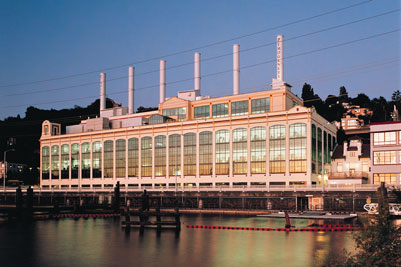Bristol-Myers Squibb’s ZymoGenetics R&D facility earns LEED Silver Certification from U.S. Green Building Council
Posted: 31 October 2014 | | No comments yet
ZymoGenetics is among an elite group of laboratories around the world that have earned the U.S. Green Building Council’s LEED® (Leadership in Energy and Environmental Design) Silver certification for Existing Buildings: Operations and Maintenance…




Since its founding 100 years ago, the historic Lake Union Steam Plant, now home to Bristol-Myers Squibb’s ZymoGenetics R&D subsidiary, has been a symbol of economic and civic importance to the Eastlake community.
A century later, it also is a symbol of environmental sustainability. Today, ZymoGenetics is among an elite group of laboratories around the world that have earned the U.S. Green Building Council’s LEED® (Leadership in Energy and Environmental Design) Silver certification for Existing Buildings: Operations and Maintenance.
LEED certification is recognized worldwide as the premier mark of achievement in green building and is awarded at one of four levels – certified, silver, gold and platinum – based on points earned on a LEED scorecard. ZymoGenetics’ Silver certification is a formal acknowledgement of the numerous internal and external environmental considerations that were implemented to make the site a clean, energy-efficient laboratory complex.
“The LEED Silver certification awarded to Bristol-Myers Squibb’s ZymoGenetics R&D subsidiary is a demonstration of our commitment to economic, social and environmental sustainability,” says Susan Voigt, vice president, Environment, Health, Safety & Sustainability, Bristol-Myers Squibb. “We are proud of the improvements that have been implemented at the facility, which is at the forefront of the research, development and manufacturing of biologic medicines that help patients prevail over serious diseases.”
ZymoGenetics’ two-year LEED certification project began in July 2012. Since then, the site has met or surpassed LEED standards for air quality and temperature, indoor plumbing and fixture efficiency, energy efficiency, and acoustics. The site has a superior energy performance rating compared to laboratories of similar type and function using the Labs21 Environmental Performance Criteria. LED fixtures and occupancy sensors were installed as part of a lighting upgrade project, and the site has reduced water use by 42% since installing new plumbing fixtures.
“Beyond recognition as a green building, the certification also has pragmatic benefits,” says Mike Fitzpatrick, director, Site & Business Operations, ZymoGenetics. “We increased operational efficiency and reduced our year-over-year usage of electricity by 17%, natural gas by 38% and water by 17%, in addition to reducing our maintenance costs and improving the well-being of our employees, all while reducing our carbon footprint and impact on the environment.”
The site also has policies governing sustainable purchasing, solid waste management and green cleaning, and works with key vendors to ensure their processes, equipment and supplies meet rigorous standards.
Worldwide, only seven laboratories have earned LEED certification for existing building operations and maintenance, and ZymoGenetics is one of only three laboratories that are LEED Silver certified. Six of the LEED certified laboratory existing building operations and maintenance projects are in the U.S., and two of them are in the State of Washington.
ZymoGenetics focuses on biologics
ZymoGenetics focuses on the discovery and early manufacture of therapeutic proteins, or biologics, specifically those with potential applications in Immuno-Oncology (I-O). Bristol-Myers Squibb is at the forefront of this science,which represents a potentially transformational approach to fighting cancer. ZymoGenetics also has core expertise and process development capabilities in the early manufacturing of microbial- and mammalian-based proteins to support toxicology studies and early-stage clinical trials.
Over 50,000 projects are currently participating in the commercial and institutional LEED rating systems, comprising over 9.3 billion square feet or construction space in all 50 states and 135 countries.
“Buildings are a prime example of how human systems integrate with natural systems,” said Rick Fedrizzi, President, CEO & Founding Chair, U.S. Green Building Council. “The ZymoGenetics project efficiently uses our natural resources and makes an immediate, positive impact on our planet, which will tremendously benefit future generations to come.”




